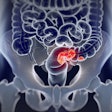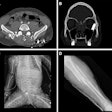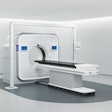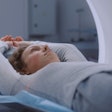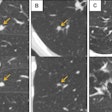For all of its benefits, low-dose CT lung cancer screening can suffer from considerable variability between radiologists reading the studies. But computer-aided detection (CAD) software can help close the gap, researchers reported in the August issue of Investigative Radiology.
A study team led by Dr. Kyung Nyeo Jeon of Gyeongsang National University in Jinju, South Korea, found that interobserver agreement improved from moderate to good following the use of CAD. In addition, the average percentage of agreement between reader pairs for positive screening results and for follow-up recommendations per case also increased after radiologists reviewed the CAD and computer-assisted volumetry (CAV) results.
"In the classification of screening results and recommendations for follow-up at screening CT for lung cancer, interobserver agreement can be improved by using the [CAD] system and CAV," Jeon told AuntMinnie.com.
Demand for CT lung screening is expected to increase due to the results of the U.S. National Lung Screening Trial (NLST), which found that low-dose CT lung cancer screening yielded a 20% reduction in mortality, Jeon said.
"However, radiologists should not miss any possible candidates for lung cancer to achieve a high cure rate, even under high workload, and interobserver agreement needs to be improved at the same time," Jeon said.
Benefits of CAD
CAD has already demonstrated its value as a second reader for improving the detection of pulmonary nodules, the authors noted. The technology can also provide more accurate measurements of nodule volume (volumetry), which can improve nodule characterization and the detection of interval changes on follow-up studies.
The researchers postulated that CAD might also help radiologists improve interobserver agreement in nodule detection and follow-up recommendations in daily practice, but there is a paucity of research addressing this point. So, the team decided to evaluate the use of CAD software on a subset of low-dose CT studies from the NSLT (Investigative Radiology, August 2012, Vol. 47:8, pp. 457-461).
Seven chest radiologists with a mean of 10 years of experience (range, 5-20 years) independently read a subset of baseline low-dose CT screening exams from 134 patients who had participated in the NLST. All images from each CT exam were evaluated by the readers using Xelis image viewing software (Infinitt Healthcare). Along with standard image viewing capabilities, the software includes lung nodule CAD and nodule volumetry tools.
Screening results were considered to be positive if noncalcified nodules larger than 4 mm in diameter were found. Using the Fleischner Society guidelines, nodule diameter (4 mm or smaller, larger than 4 mm up to 8 mm, and larger than 8 mm) served as the basis for follow-up recommendations. Recommendations were based on the largest nodules if multiple nodules were present.
Readers initially assessed scans visually for nodule presence, and then manually measured nodule diameter. They were allowed to revise their decisions after reviewing the CAD marks and measurements of the nodules. The researchers then evaluated interobserver agreement using multirater J statistics to compare the readers' initial reviews with their final assessments after viewing the CAD results.
Multirater kappa values for positive screening results increased from 0.53 before CAD to 0.66 after CAD, and climbed from 0.54 before CAD to 0.67 after CAD for follow-up recommendations. In both cases, the kappa values improved from moderate agreement before CAD to good agreement afterward.
Mean interobserver agreement between reader pairs
|
"We showed the potential usefulness of CAD for reducing interobserver variability in interpretation of low-dose screening CT for lung cancer," Jeon said. "After the use of CAD, interobserver agreement was improved in both detecting nodules and making follow-up recommendations."
Readers changed their decisions more frequently due to nodule size measurement than from the detection of new nodules, Jeon noted.
"Further work is necessary to determine the practical value of CAD in the clinical setting and successful integration of lung nodule CAD into the clinical workflow is required," the authors wrote.
In the next phase of the research project, Jeon said he would also like to study the impact of low-dose CT on lung cancer screening at his hospital in Korea over the past 10 years.









